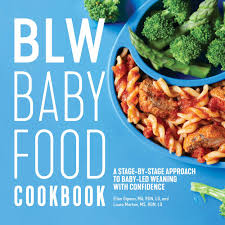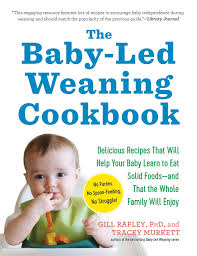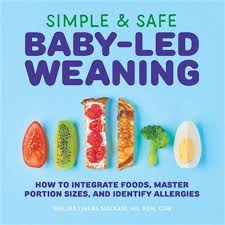All About Baby-Led Weaning
- briellepskene
- Dec 7, 2020
- 5 min read
Updated: Dec 7, 2020
Being in a Holistic Doula Program I have the opportunity to receive more training compared to other doula courses. One of the benefits of my doula training was getting to take a Holistic Nutrition Class. For my presentation I chose to do Baby-Led Weaning (BLW), a method to introduce solids into a babies diet, around 6 months old.

The term BLW was coined by Gill Rapley and Tracey Murkett, 15 years ago, in their book: The Essential Guide to Introducing Solid Foods. BLW is a method delivered to babies so they can discover the texture, smell, taste, and colour of foods. BLW doesn't mean a baby is weaning off of breastmilk or formula, it simple means foods are being introduced into the baby's diet. Unlike offering a baby purees, a baby has full control over what they eat, parents simply place food onto the high chair and a baby is able to pick up and eat the amount of food they wish. This is helpful because a baby will be able to tell you when they are full or not, plus it gives them the opportunity to play around with the texture of the food.
What Are The Benefits?
BWL increases a baby's fine motor skills: helps support the development of hand-eye coordination, chewing skills and healthy eating habits. As well, BWL decreases the likelihood of having a picky eater plus there is no added sugars or salts in the baby's diet (there is no nutritious value for babies at such a young age). On top of that, by using the BWL method you can easily pinpoint food allergies by introducing a few new foods at a time.
What Are The Risks?
Anytime a baby starts to eat there will be risks. The biggest risk is choking or gagging. It is crucial to remember the difference between the two. Gagging is a reflective safety mechanism used to get rid of food too challenging for a baby. A baby will be coughing, face will turn red and have watery eyes. Most of the time a baby will solve this issue on their own. Chocking, on the other hand is more serious. Chocking occurs when food is stuck or blocking the airflow. A baby will not make much noise and will be turning blue. This is when a baby needs help from a parent or caregiver. The slogan "loud and red, let them go ahead, quiet and blue, they need help from you" is an easy way to pinpoint if a baby is gagging or chocking.

Key Nutrients A Baby Needs
Iron (Vitamin C is an important cofactor to help with iron absorption)
Benefits- Brain Development
Daily Intake- 11 mg
Good Sources- Breastmilk, fat-fortified formula, meat, poultry, beans, lentils, wheat, oats, prunes, and leafy greens
Zinc
Benefits- Cell Growth
Daily Intake- 3 mg
Good Sources- Meat, poultry, yogurt, beans, nuts, and seeds
Choline
Benefits- Cell membrane structure, brain development/ function
Daily Intake- 150mg
Good Sources- Beans, beef, eggs, fish, and soybeans
Fat
Benefits- Overall Growth
Daily Intake- 50% of daily calories
Good Sources- Salmon, beef, avocado, nut butter, whole fat yogurt, butter, cheese, and oils
Omega-3s (especially DHA)
Benefits- Brain, Eye, and Nervous System Development
Daily Intake- A few times a week
Good Sources- Breastmilk, salmon, sardines, herring, anchovies, or a fish oil
Vitamin D
Benefits- Builds strong bones, plays a vital role in almost all body systems
Daily Intake- At least 400 IU (international units)
Good Sources- Sunlight, fatty/oily fish, and fish oil
Water
Benefits- Hydrates the body, flushes waste products and prevents constipation
Daily Intake- A few sips per meal
Good Sources- This is the only beverage recommend to children 1 year or younger beside from breastmilk or formula
Salt and Sugar
Benefits- No nutritional benefits at this age
Daily Intake- Less than 1g salt
Good Sources- Choosing whole foods over processed options is a simple way to limit excess salt and sugar
How To Serve Food
When a baby is first introduced to solids, the food should be served in long strips. This is because a baby doesn't have the fine motor skills to pick up small pieces of food around 6 months old. Starting off with long strips of food will allow babies to develop their palmer grasp- grasping food with their whole palm, making it easier for babies to get food into their mouth. As a baby's fine motor skills develop, you can start to introduce smaller pieces of foods, as a baby will now be able to pick up food with their pointer finger and thumb. This is called the pincer grasp.
Offering soft foods is also important as most babies won't have many teeth. Hard foods can be a choking hazard because babies don't have enough strength in their jaw to break up the food before swallowing. An easy way to offer soft food is by steaming or roasting vegetables, using ground meats and choosing soft fruits. Also making sure pastas and grains are fully cooked or even a bit overcooked so it is easier for a baby to breakdown in their mouth.
Tips For Success and Safety Rules To Follow
- Always be with a baby while they are eating. A baby must be able to sit up in a high chair unassisted before they can start solids, if a baby can't sit on their own they should not begin solids.
- Never rush a baby to eat or don't force a baby to eat food. Rushing a baby to eat can cause them to choke or gage because they aren't breaking down the food properly in their mouth. BLW allows babies to eat as much or as little as they wish, when a baby stops eating that means they are most likely full. You should never force a baby to continue eating because they will be overeating and could upset their stomachs.
- Watch for chipmunk cheeks. If you start to see your baby get chubby cheeks this means instead of swallowing the food their are storing it inside their cheeks. Encourage them to spit the food out or only put small amounts of food on the highchair to prevent chipmunk cheeks from happening.
- Prepare for a mess and plan ahead. BWL is messy because babies have full control over their food. Especially during the beginning stages more food will end up on the ground then in a baby's mouth. Plan ahead and meal prep will make the BWL process easier. Dedicate one afternoon a week (Sundays are great!) to prepare a bunch of meals so when it comes time for your baby to eat there will always be something whipped up for them.
- Eat as a family. A baby is more likely to eat the food you give them by watching what the rest of the family eats. Most of the time the baby will be eating almost the same foods as the family with slight variations so eating together can offer lots of encouragement. Plus eating as a family is a great time for bonding!
Helpful Books
Instagram Accounts To Follow
@solidstarts @babyledweanteam @feedinglittles
@babyledweaningideas @babyledsolids
If you have any questions or stories you would like to share about BWL, please do!
-Brielle Pedersen-Skene









Comments